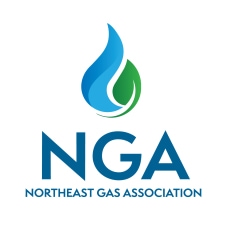Natural Gas Price
KEY POINTS
- The market for energy commodities globally has been significantly more volatile in the last two years, reflecting lingering supply chain issues, inflation, and the impact of Russia's war against Ukraine.
- U.S. EIA projects natural gas commodity prices to decline in 2023.
- EIA data indicates that natural gas remains the lowest cost home heating source in the Northeast and nationally.
- Spot market prices in the Northeast can be extremely volatile during high demand periods (such as the winter), reflecting high demand and infrastructure constraints.
- It should be added that natural gas utility "firm" customers, such as residential heating consumers, are to a great extent protected from these market price swings due to utility planning and supply portfolio management.
- Natural gas utilities offer budget billing plans, efficiency options, and information on federal funding support for low-income households, to help customers manage winter energy costs.
Natural Gas Price Trend
The trend in natural gas commodity prices in the U.S. over the last decade generally has been toward lower and more stable prices, as the country experienced high domestic production, especially since 2008 and the rise of shale gas production.
The key variables in natural gas price formation generally include production levels, demand growth, the state of the economy, storage levels, weather, and alternate fuel prices.
The outlook as of March 2023 is for natural gas commodity prices to be lower this year in the U.S. after quite volatile prices in the previous two years. 2021 saw higher commodity prices for all fuels, including natural gas, as supply chain and transport issues challenged the global delivery market. The trajectory for energy commodity prices in 2022 was even higher, as a result of inflation and the impact of Russia's war on Ukraine.
In its March 2023 "Short-Term Energy Outlook," the U.S. EIA states that "the Henry Hub natural gas spot price in our forecast averages about $3 per million British thermal units (MMBtu) in 2023, down by more than 50% from last year."
EIA also noted in October 2022, in its annual "Winter Fuels Outlook", that natural gas would be the lowest cost home heating energy source in the Northeast for the 2022/23 winter.
Short-term Volatility and Pipeline Constraints
in Northeast Gas Market
Short-term volatility reflecting delivery constraints during periods of high demand and cold weather do occur, especially in regional markets. The Northeast region, for instance, remains among the most price-sensitive markets in the country, reflecting its pipeline constraints.
Utilities have in place long-term supply and storage arrangements, and their "firm rate" customers, such as residential heating customers, are to a great extent protected from spot market fluctuations. As the U.S. EIA has observed: "Residential customers see less [price] variation because their bills reflect monthly average prices, which do not fluctuate as much as daily prices. Also, many residential customers stabilize their monthly bills by participating in yearly budget plans provided by their local gas distribution companies."
EIA notes that for New England and New York, "Pipeline constraints still exist in the area, and day-to-day price volatility is likely." Spot market volatility is most prone to impact "non-firm" or interruptible customers, with particular impacts on the power sector in the region, and thus ultimately electric customers. The Northeast region - a high-demand region but one characterized by pipeline infrastructure constraints - has experienced periods of some of the highest gas and power spot price volatility in the U.S. over several recent winters - in 2013/14, 2014/15, and 2017/18.
In its 2021 energy market review published in April 2022, the FERC noted the high-price fundamentals of the Northeast gas market due to capacity limitations. The agency stated that: "Due to constrained pipeline capacity into New England, segments of the region's pipelines often reach their maximum capacity in winter. Prices at Algonquin Citygates frequently reflect winter scarcity as well as the region's reliance on LNG imports to supplement pipeline supplies. As global demand for LNG increased, natural gas prices in New England also rose, reflecting the effects of the tight international market on the region." In its December 2022 "Short-Term Energy Outlook," looking ahead to the most recent winter, EIA stated: "Capacity constraints on pipelines delivering natural gas into New England make it likely that wholesale electricity prices will be set by relatively expensive imported LNG or fuel oil."
Gas utilities in the region offer budget billing plans and efficiency programs, and LIHEAP funding from the U.S. government remains important for lower-income households. While natural gas remains the most affordable home heating fuel, programs such as these, and the opportunities for infrastructure capacity additions, remain key to helping serve customer needs and the needs of the local economy.



